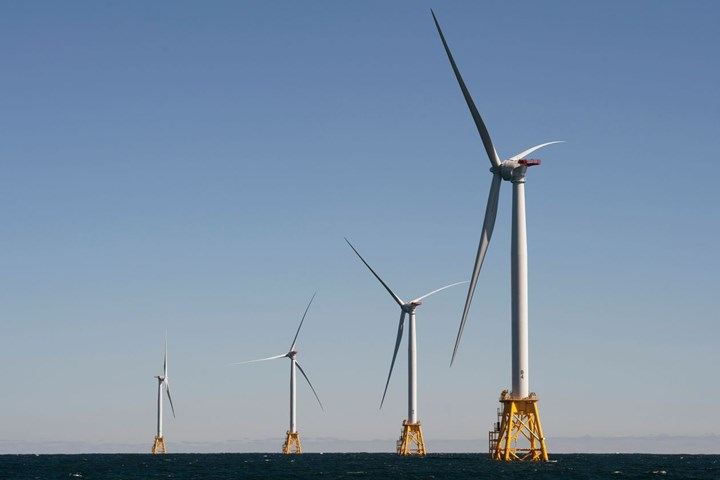New initiatives launched to expand U.S. offshore wind energy
The White House announced a new goal of 15 GW floating offshore wind energy by 2035, and new R&D funding and programs.

On Sept. 15, the U.S. Departments of Energy, Interior, Commerce and Transportation announced new initiatives to expand offshore wind energy in the U.S., including new development for floating offshore wind platforms, and a new target of 15 gigawatts (GW) of floating offshore wind capacity in the U.S. by 2035.
Specifically, three inititives were annoucned:
New Floating Offshore Wind Shot to Lower Costs by 70%: Through the Department of Energy (DOE) Energy Earthshot program, the Biden Administration will create a new Floating Offshore Wind Shot to accelerate breakthroughs across engineering, manufacturing, and other innovation areas. The Floating Offshore Wind Shot will aim to reduce the costs of floating technologies by more than 70% by 2035, to $45 per megawatt-hour.
For this initiative, the DOE and the National Science Foundation (NSF) will also collaborate on research and workforce development. Agencies will also continue collaborating to develop the robust domestic supply chain and transmission infrastructure needed to accelerate floating as well as fixed-bottom offshore wind.
New Goal to Reach 15 GW by 2035: The Administration will advance lease areas in deep waters in order to deploy 15 GW of floating offshore wind capacity by 2035, enough to power more than 5 million American homes. This builds on the President’s existing goal of deploying 30 GW of offshore wind by 2030, which will be largely met using fixed-bottom technology.
The Department of the Interior’s (DOI) Bureau of Ocean Energy Management (BOEM) will advance lease areas in deep waters for floating technology, starting with a lease auction off the coast of California by the end of 2022. Achieving this ambitious target will spur billions of dollars of economic opportunities and avoid an estimated 26 million metric tons of carbon emissions annually.
Research & Development Investments: To support these goals, this week the Administration launched a new prize competition for floating offshore wind platform technologies; initiatives funded by the Bipartisan Infrastructure Law to develop modeling tools for project design and to analyze port needs; and other funding for research, development, and demonstration efforts.
For more information and the full announcement, see the White House fact sheet.
Related Content
-
Syensqo becomes new Solvay specialty materials company
Syensqo represents what was Solvay Composite Materials, focused on delivering disruptive material technologies and supporting growing customer needs.
-
Microwave heating for more sustainable carbon fiber
Skeptics say it won’t work — Osaka-based Microwave Chemical Co. says it already has — and continues to advance its simulation-based technology to slash energy use and emissions in manufacturing.
-
Ford Mustang Dark Horse features Carbon Revolution carbon fiber wheels
The 19-inch, five-spoke Dark Horse wheels feature signature blue carbon fiber detailing, keeping with the blue accents throughout the vehicle’s interior and exterior.

.jpg;width=70;height=70;mode=crop)










.jpg;maxWidth=300;quality=90)



